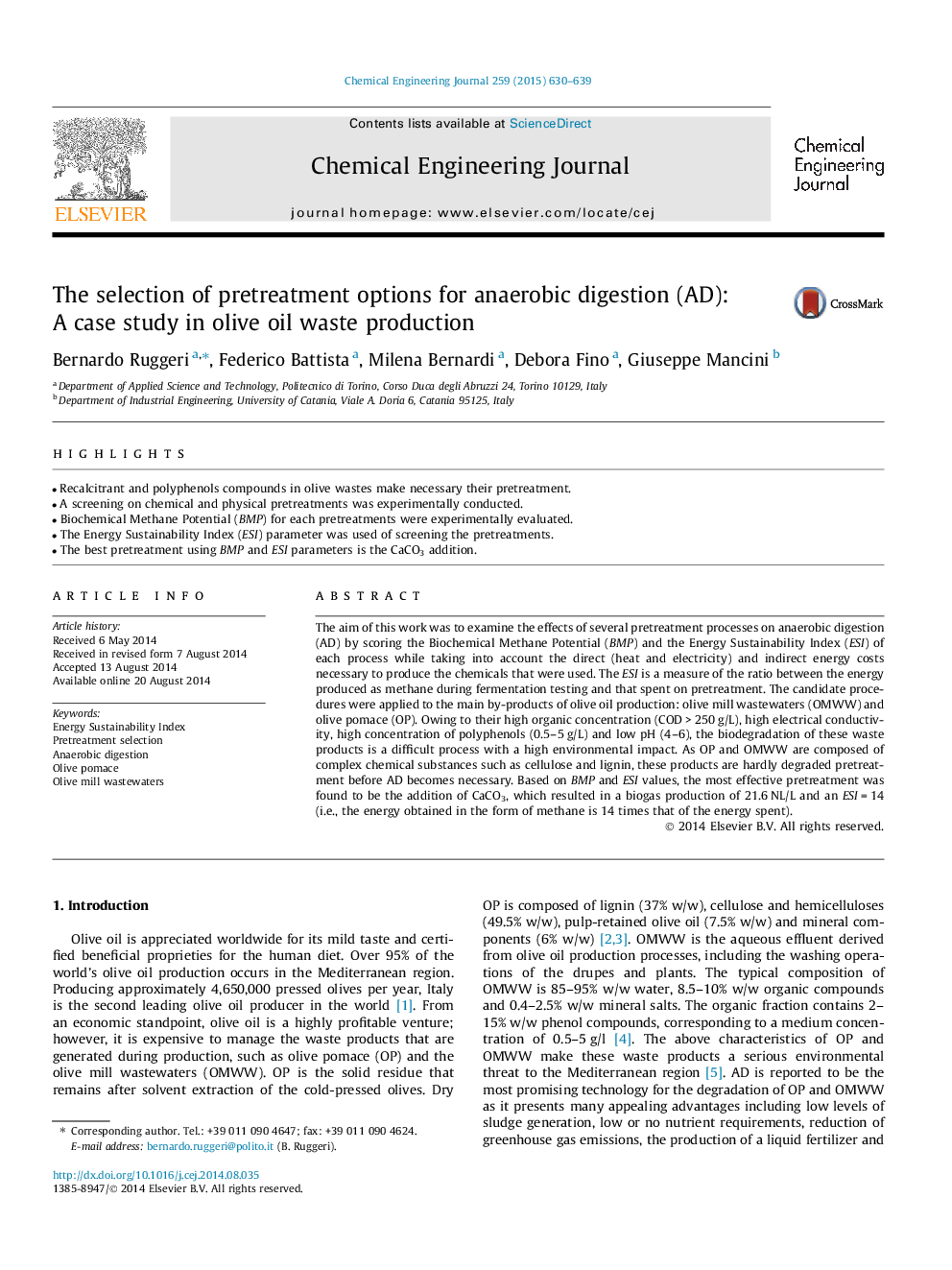| Article ID | Journal | Published Year | Pages | File Type |
|---|---|---|---|---|
| 6585925 | Chemical Engineering Journal | 2015 | 10 Pages |
Abstract
The aim of this work was to examine the effects of several pretreatment processes on anaerobic digestion (AD) by scoring the Biochemical Methane Potential (BMP) and the Energy Sustainability Index (ESI) of each process while taking into account the direct (heat and electricity) and indirect energy costs necessary to produce the chemicals that were used. The ESI is a measure of the ratio between the energy produced as methane during fermentation testing and that spent on pretreatment. The candidate procedures were applied to the main by-products of olive oil production: olive mill wastewaters (OMWW) and olive pomace (OP). Owing to their high organic concentration (CODÂ >Â 250Â g/L), high electrical conductivity, high concentration of polyphenols (0.5-5Â g/L) and low pH (4-6), the biodegradation of these waste products is a difficult process with a high environmental impact. As OP and OMWW are composed of complex chemical substances such as cellulose and lignin, these products are hardly degraded pretreatment before AD becomes necessary. Based on BMP and ESI values, the most effective pretreatment was found to be the addition of CaCO3, which resulted in a biogas production of 21.6Â NL/L and an ESIÂ =Â 14 (i.e., the energy obtained in the form of methane is 14 times that of the energy spent).
Related Topics
Physical Sciences and Engineering
Chemical Engineering
Chemical Engineering (General)
Authors
Bernardo Ruggeri, Federico Battista, Milena Bernardi, Debora Fino, Giuseppe Mancini,
